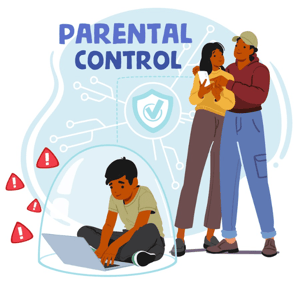So your child wants to design games? If so, be not dismayed! You are not alone.
If you are like many parents, you may be thinking that game design is child’s play, a pie in the sky dream, and likely a waste of time. Would it surprise you that game design is a lucrative profession, and that game designers earn an average of $88,271 per year?
But there’s more encouraging news. Even if your child’s interest in game design is short-lived, there are a number of important reasons why supporting her in the endeavor can pay dividends regardless of the field she chooses.
Designing games for others builds cognitive abilities and imagination. Game design teaches valuable skills that can be used in a variety of fields – including software design, UI/UX (user interface / user experience), teamwork, management, and marketing.
By teaching kids to think from someone else’s perspective, they intrinsically learn the key entrepreneurial skill of value creation – which can help in almost any profession.
If your kids are excited about game design, you should do your best to guide them in the right direction. Transitioning from a passionate gamer to an actual game designer is not easy, and it requires a lot of learning and training. The good news is that there are many resources for kids to develop their skills.
In this article, I’ll provide you with 5 practical tips that will help you help your child understand what it takes to become a rockstar game designer:

Table of Contents
1. Play Games and Evaluate Gameplay
It sounds obvious, but the best way to get started with game design is by playing games.
As your kids start to invest time into playing video games, they’ll start to see patterns. By looking at a game from different angles, young gamers will gain an understanding of what makes a game fun and how particular elements and mechanics make it so interesting and addictive.
Apart from playing and analyzing good games, it’s also helpful to expose your kids to bad ones as well. Make it their job to tell you what makes a certain game boring or repetitive. Keep asking them questions until they run out of answers. This will help them get to the root of the problem and identify how to fix specific games.
By thinking about how to resolve core issues with bad games, your kids will develop a specific problem-solving mindset that will certainly help them become better game designers in the future.

2. Create with Code
In today’s world, successful game designers have a deep understanding of computer programming. Designers are often expected to write scripts when laying out levels, and when technical challenges arise, designers with coding backgrounds are often able to brainstorm solutions with the programming team, providing immediate value.
Fortunately for today’s children there are some fantastic ways that kids can learn to code while honing their game design skills at the same time.
One of our favorite introductory resources is MIT Media Labs Scratch platform. Scratch allows kids to program simple 2D games using a visual block programming language. But the coolest thing about Scratch is that kids get to make design decisions about the games that they create. They can determine how fast enemies travel, how many hit points the user’s player has, the velocity of a laser shot, the look and feel of a game, and more.
Once your child is ready to move past visual block coding, the CodaKid platform is a great place to learn computer programming and game design using real languages and professional tools. CodaKid students can build their own Minecraft mods, Roblox games, 3D adventure games using the Unreal 4 Game Engine, game apps, and more. They even get online support from real programmers and designers.
Once your child has developed the necessary skills, they can begin using Roblox, Unreal, or the Unity platforms independently. All are free and open source, and provide access to the same tools that professional designers at major studios use. For example, the best-selling game Fortnite was created with the Unreal 4 Game Engine.
Platforms like Roblox have created a marketplace where your child can publish and even try to earn money from selling her games. Some teens are in fact making millions building games for the Roblox platform.
Coding is a big part of game design, especially for designers who want to take a bigger role in creating their own games. Teaching your kids to write code will help them translate their vision onto the screen and finish actual working products on their own.

3. Design Games With the 4 Cs
As Indie game developer and writer Darran Jamieson puts it, the four key elements of game design are challenge, choice, change, and chance.
The objective of every game is to get people to play and enjoy it. If a game does not have the proper challenge level, users will soon become bored with its ease or frustrated with its difficulty. Challenges should build up slowly and steadily while the gamer gets used to the controls and the overall strategy of the game. Teaching your child this concept should be one of the first things that you do.
Depending on the game genre, choice is also important. Giving players the power to make choices that impact the game experience is an integral part of any good game. And the best games are not linear in that player can make different choices and enjoy a completely different gameplay experience.
As Jamieson explains, change is what gives a game replay value or stickiness. Even basic 2D games present the user with a variety of backgrounds – from grass worlds to lava worlds to sky worlds. As games progress, a good designer learns to vary the series of micro-challenges so that the user never gets bored with repetitive tasks.
Game designers increasingly use chance to introduce unexpected and unpredictable elements into gameplay. One of the most common strategies that designers use is randomization which presents the player with an unpredictable number of enemy attacks, randomly timed challenges, and other alterations that increase gameplay value. In the realm of multiplayer (human versus human) games, there is a a natural element of chance, in that some players take risks, misjudge circumstances, make mistakes, and add an unpredictable element to the game.
Understanding the four Cs of game design can help your child build engaging games that have strong replay value.

4. Teach Them to Become Storytellers
Game design is complex. Elements such as gameplay difficulty, level layout, and user interface influence the overall success of a game. But one thing that separates great game designers from the pack is their ability to tell a story.
Storytelling acts as a vital mechanism for driving gameplay forward and the more immersive experience the designer can create, the more successful a game will become.
When a player becomes immersed in the storyline, the player can experience what one experiences in a good book or movie – the sense of becoming so engaged that they feel transported to another realm.
Structure is key here. Before thinking about designing their own game, kids need to determine what kind of game they want to build, what choices the players have, how open or constrained those choices will be, and how will they influence both the ongoing story and the final ending.
There are many different exercises for teaching storytelling. You can enroll them in classes, encourage them to read, or just encourage them to play string-a-long storytelling games.

5. Practice, Practice, Practice
Game design is a challenging process. In my own experience designing games for the Sony Playstation and the PC, I found that certain ideas seemed great on paper, but the moment that they were translated to actual gameplay, they were failures.
In game design, the rubber meets the road moment is when you surrender the controls to others, and let them play your game, solve your puzzles, and tackle your challenges.
If your child decides to take courses at CodaKid, they will learn how to make the process of designing and building games into small, manageable chunks. Along the way, we always encourage our students to get others to try their creations and get honest feedback from them. By learning the art of iterative design (see design below), students plan, design, implement, test, evaluate feedback, plan, design, implement, and finally deploy their games when ready.
Practicing your craft by building lots of games is the best way to become a skilled designer. It’s that simple.
Wrap Up
Game design is a perfect activity for kids with rich rich imaginations. And for students who perhaps haven’t yet explored their creative sides, game design provides an excellent launching point to develop these skills.
Game designers develop characters and game mechanics, and become the creators of infinite worlds and realities. The user-centric philosophy of the discipline helps youngsters become comfortable with technology and it teaches them how to understand, analyze, and manipulate different systems.
Perhaps the greatest learning lesson from game design that it teaches kids to think from someone else’s perspective.
As a career choice, game design is a very rewarding and challenging, but the hours are long and the competition is fierce. If your child is serious about it, we advise you to help them build a portfolio of games built with games engines and platforms such as Unity and Unreal, and to learn how to code. Languages such as C++, C#, and JavaScript are particularly handy, and proficiency with these will give your child a leg up in the hyper-competitive landscape.
Thank you for reading our latest article. I hope it helped you understand what it takes to design games like a pro.
Did you feel that we missed anything important that you might recommend to students interested in designing games? If so, please leave your suggestions in the comments below!


















